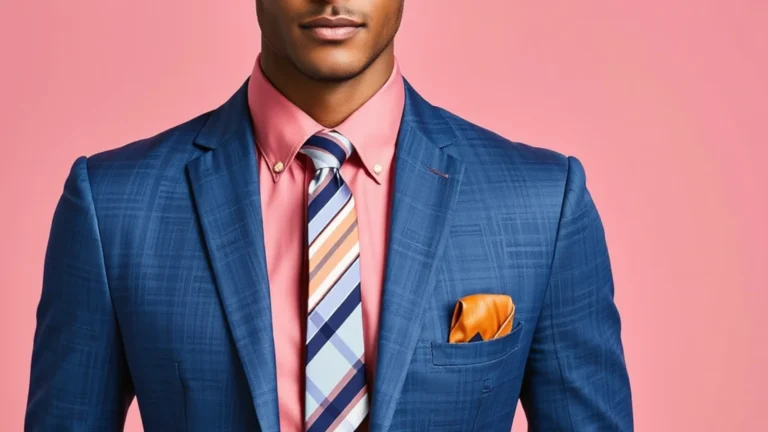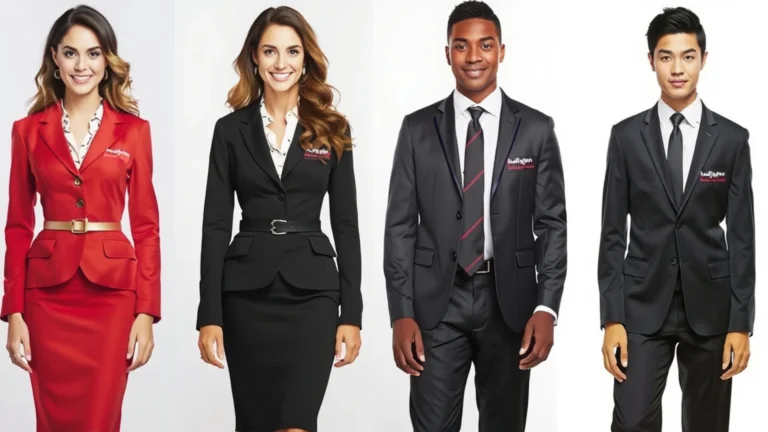Understanding Business Casual Fabrics: Comfort and Style

Business casual clothes are now a norm in today’s workplaces. These wearings strike the middle line between professional and relaxed dress codes. While the term has mainly been associated with particular articles of clothing, it’s about the fabrics. This will define the basis of what constitutes business casual and set limits on comfort, durability, and versatility of clothes. In this article, we will embark on a journey to discuss business casual fabrics and guide you in dressing for success.
Importance of Fabric in Business Casual Attire:
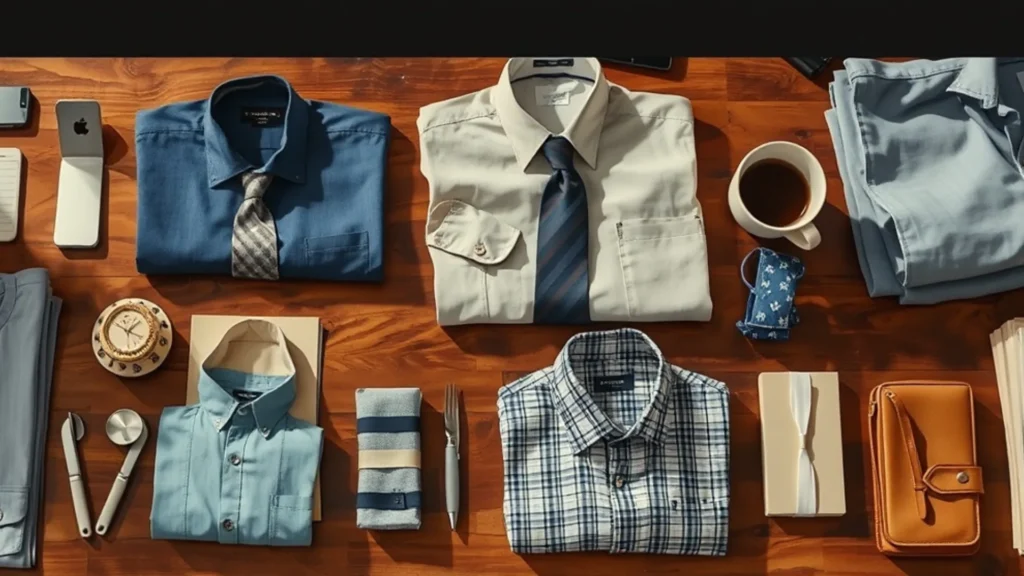
Fabric selection is the backbone of any outfit. In a business casual context, it determines how polished or relaxed your attire appears. The right fabric can enhance your appearance, provide comfort throughout the day, and ensure your clothing lasts longer. Key factors to consider when choosing fabrics for business casual attire include breathability, texture, drape, and ease of maintenance.
Cotton: The Versatile Staple
Cotton is the bedrock of business casual wardrobes. Breathable and soft, cotton is a favorite for shirts, chinos, and lightweight blazers.
Advantages: Cotton is comfortable, absorbs moisture, and is easy to care for. It comes in various weaves, such as poplin, Oxford, and twill, offering versatility in style.
Disadvantages: Pure cotton wrinkles easily, which can make your outfit look less polished. Choosing blends or wrinkle-resistant treatments can mitigate this issue.
Wool: The Timeless Classic
Wool is synonymous with professionalism and is often associated with suits and blazers. However, lightweight wool fabrics such as merino or tropical wool are excellent choices for business casual settings.
Advantages: Wool controls temperature very well, making it perfect for warm as well as cool climates. Wool is elastic by nature; thus, it does not wrinkle easily and holds its shape well.
Disadvantages: Woolen garments usually require dry cleaning and may be more expensive than other fabrics.
Linen: The Summer Favorite
Linen is a material that is highly breathable and therefore ideal for warm weather. Linen shirts, trousers, and blazers add a relaxed yet refined touch to business casual outfits.
Advantages: Linen is lightweight and very breathable, so it is comfortable in hot climates.
Disadvantages: Linen wrinkles easily, which can make the garment look more casual. Blends with cotton or synthetic fibers reduce wrinkling while retaining the fabric’s airy qualities.
Polyester and Synthetic Blends: The Contemporary Choice
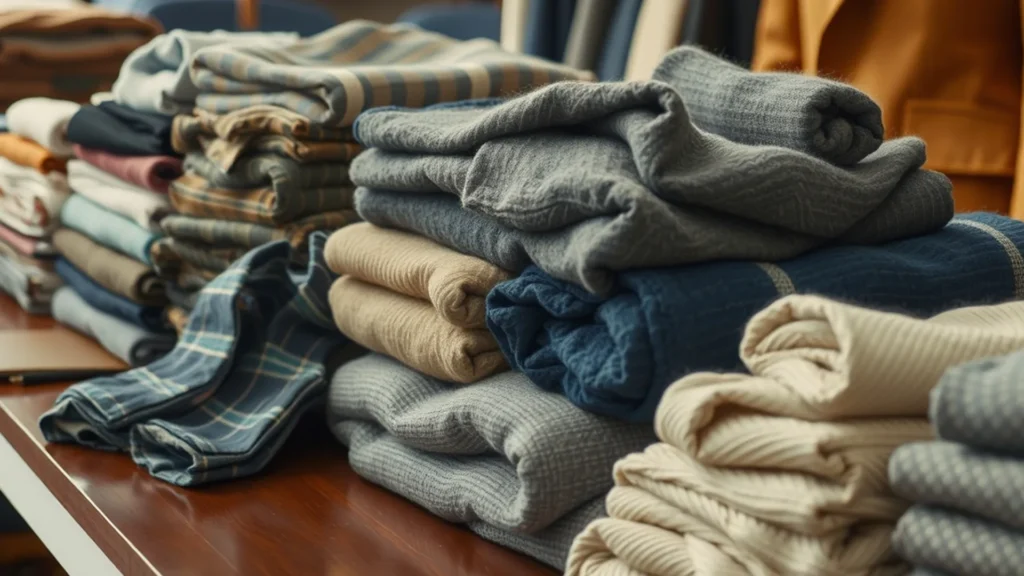
Polyester and its blends are favored for their durability and resistance to wrinkles. These fabrics are often used in business casual trousers, shirts, and dresses.
Advantages: Polyester is low-maintenance, wrinkle-resistant, and affordable. Blends with natural fibers like cotton or wool combine the best of both worlds.
Disadvantages: Pure polyester can lack breathability and may feel less comfortable in warm weather. Choosing high-quality blends can improve comfort and aesthetics.
Denim: The Casual Edge
Denim, despite its casual associations, has crept into the business casual fray. Dark wash jeans or denim skirts with a button-down top do lend a kind of elegant casualness to an outfit.
Advantages: Denim is very tough and quite versatile, enabling some excellent creative combinations.
Disadvantages: Light wash and distressed denim is usually just too sloppy for most workplaces. Only darker shades have a good chance of creating a respectable look.
Silk: The Luxe Option
Silk is a luxurious fabric used in blouses, scarves, and ties. Its sheen and smooth texture add elegance to business casual ensembles.
Advantages: Silk drapes beautifully and feels luxurious against the skin. It’s an excellent choice for adding a touch of sophistication.
Disadvantages: Silk requires delicate care and is prone to staining. Opt for blends to improve durability and ease of maintenance.
Knits: The Comfortable Alternative
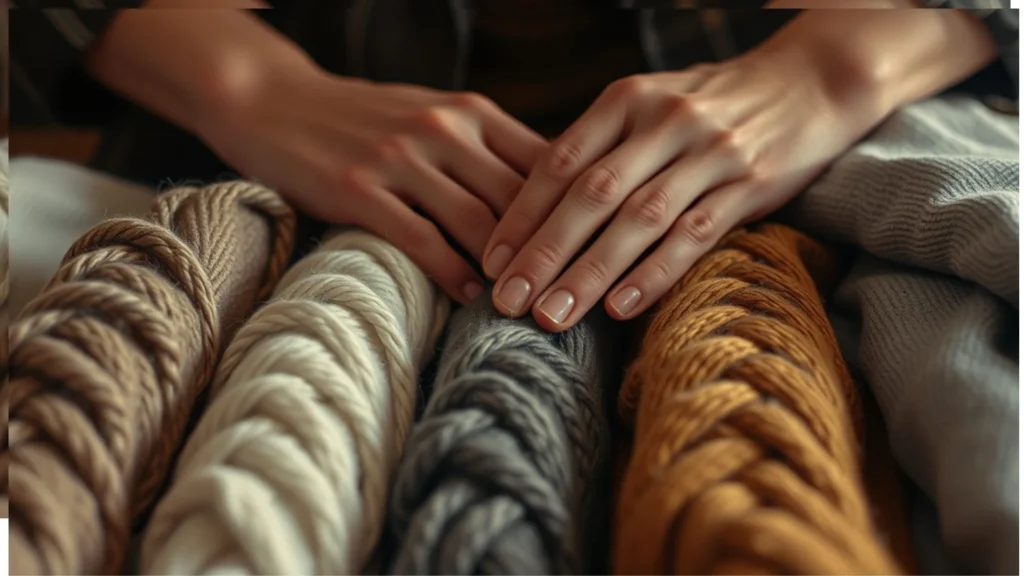
Knits, such as jersey and ponte fabrics, are rising in popularity in business casual environments. These fabrics most often appear in dresses, skirts, and lightweight sweaters.
Advantages: Knits are stretchy and comfortable, and they make it easy to maintain yourself. They are relaxed while looking polished.
Disadvantages: Some workplaces may not consider very casual knitwear an appropriate fit. Stick with structured designs for a very professional look.
Blends: The Best of Both Worlds
Fabric blends are a combination of natural and synthetic fibers for enhanced durability, comfort, and style. Common fabric blends include cotton-polyester, wool-silk, and linen-cotton.
Strengths: Blends combine the strengths of different types of fibers to suit different types of needs.
Weaknesses: The quality can vary greatly, so do not compromise on quality but choose well-crafted fabrics.
Choosing the Right Fabric for Different Business Casual Pieces
Shirts:
- Always go for cotton, linen, or blends for your button-down shirts.
- Knit tops and silk blouses are great options for a contemporary style.
Trousers:
- Chinos in cotton or cotton blends are essentials.
- Wool trousers are more formal.
Blazers:
- Opt for lightweight wool, cotton, or linen for versatility.
- Blended fabrics are wrinkle-resistant and durable.
Dresses and Skirts:
- Knit fabrics, ponte, or silk are great for comfort and style.
- Avoid jersey unless with structured accessories.
Outerwear:
- Blends of wool with other materials, such as coats, trench coats, or blazers, layer well.
Caring for Business Casual Fabrics
To maintain and extend the lifetime of your clothing, always care for it properly. Here are some general guidelines:
- Care Labels: Read and adhere to the manufacturer’s guidelines for washing and ironing.
- Quality Fabric: Spend money on high-quality materials that will rarely need replacement.
- Ironing and Steaming: Steaming is preferable for silk and linen due to its delicate nature.
- Storage: Keep garments in a cool, dry place. Blazers and dresses are hung using padded hangers so they do not get flattened.
Seasonal Adjustments
Seasonality impacts fabric. For example:
Spring and Summer: Use light materials such as linen, cotton, and blends for breathability.
Fall and Winter: Use wool, knit, and heavier blends for warmth.
Sustainability in Business Casual Fabrics
It’s becoming more important to look for sustainable options in fabric choices. Organic cotton, recycled polyester, and sustainably sourced wool are environmentally friendly. Sustainable fabrics may be expensive, but that’s where the quality usually lies, as well as the environmental responsibility.
Conclusion
The type of fabric you choose for your business casual outfit determines a lot about your style, comfort, and confidence. Knowing the properties of different fabrics will help you create a wardrobe that can be used in a variety of professional settings and to suit your personal tastes. Whether you like the crispness of cotton, the elegance of silk, or the functionality of blends, high-quality materials will ensure you always look and feel.

